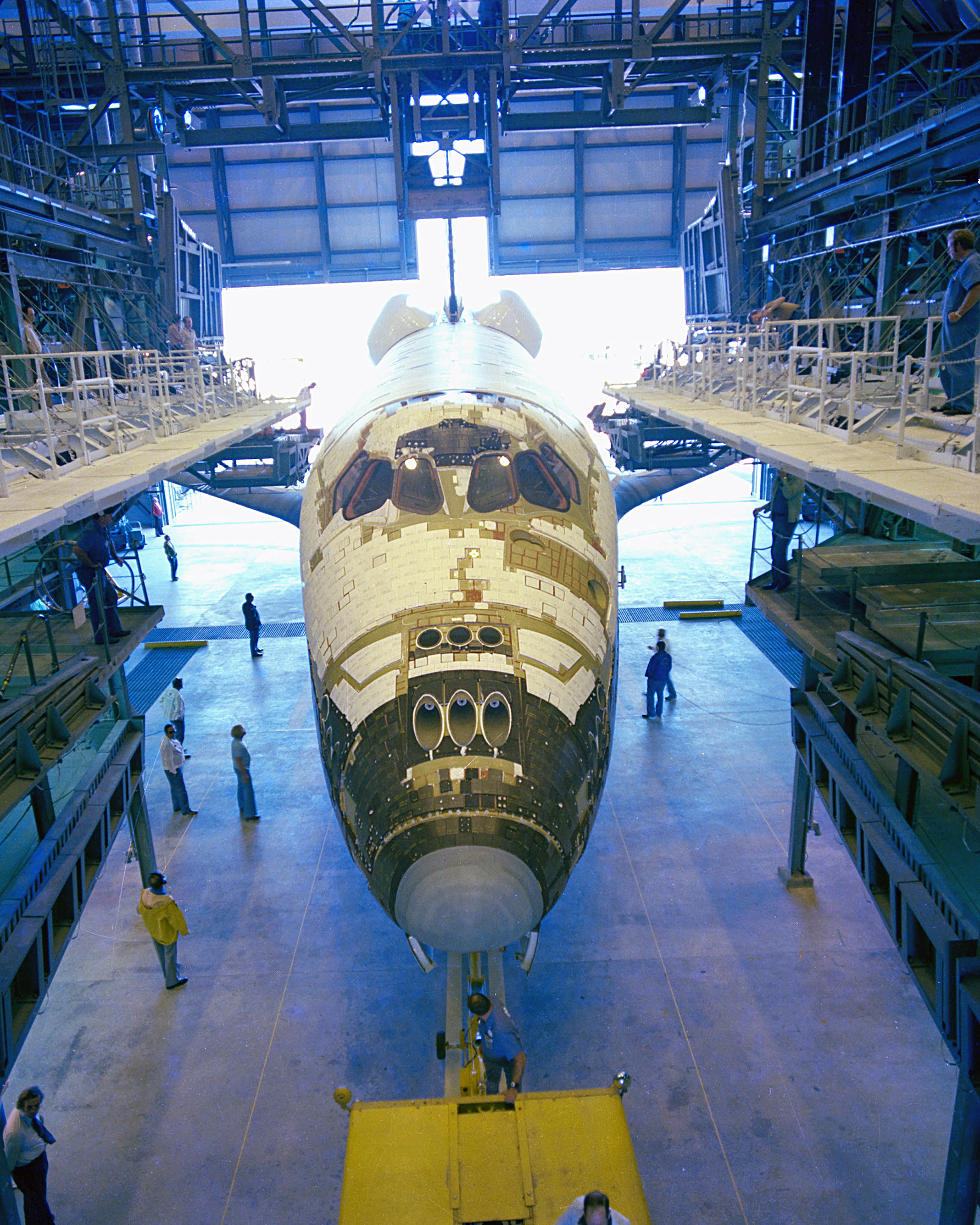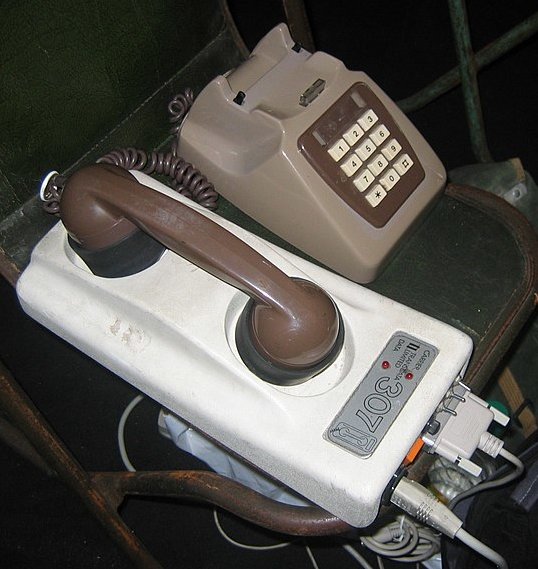|
Satellite Business Systems
Satellite Business Systems (SBS) was a company founded by IBM, Aetna, COMSAT (and later wholly purchased by IBM and then subsequently sold to MCI), that provided private professional satellite communications through its SBS fleet of FSS geosynchronous satellites, and was the first company to do so. SBS was founded on December 15, 1975 by the aforementioned companies with the goal of providing a digital satellite communications network for business and other professional clients. History In late 1970, MCI Communications created a subsidiary company named MCI Satellite, Inc. The idea was that satellites could provide 'long distance' service from anywhere to anywhere without having to build thousands of miles of terrestrial network facilities. In early 1971, MCI and Lockheed Missiles and Space Company created a joint venture named MCI Lockheed Satellite Corp. which was the first company to request FCC authorization as a Specialized Common Carrier using satellite based communic ... [...More Info...] [...Related Items...] OR: [Wikipedia] [Google] [Baidu] |
Satellite Communication
A communications satellite is an artificial satellite that relays and amplifies radio telecommunication signals via a transponder; it creates a communication channel between a source transmitter and a receiver at different locations on Earth. Communications satellites are used for television, telephone, radio, internet, and military applications. Many communications satellites are in geostationary orbit above the equator, so that the satellite appears stationary at the same point in the sky; therefore the satellite dish antennas of ground stations can be aimed permanently at that spot and do not have to move to track the satellite. Others form satellite constellations in low Earth orbit, where antennas on the ground have to follow the position of the satellites and switch between satellites frequently. The high frequency radio waves used for telecommunications links travel by line of sight and so are obstructed by the curve of the Earth. The purpose of communications satell ... [...More Info...] [...Related Items...] OR: [Wikipedia] [Google] [Baidu] |
RF Spectrum
Radio frequency (RF) is the oscillation rate of an alternating electric current or voltage or of a magnetic, electric or electromagnetic field or mechanical system in the frequency range from around to around . This is roughly between the upper limit of audio frequencies and the lower limit of infrared frequencies; these are the frequencies at which energy from an oscillating current can radiate off a conductor into space as radio waves. Different sources specify different upper and lower bounds for the frequency range. Electric current Electric currents that oscillate at radio frequencies (RF currents) have special properties not shared by direct current or lower audio frequency alternating current, such as the 50 or 60 Hz current used in electrical power distribution. * Energy from RF currents in conductors can radiate into space as electromagnetic waves (radio waves). This is the basis of radio technology. * RF current does not penetrate deeply into electrical condu ... [...More Info...] [...Related Items...] OR: [Wikipedia] [Google] [Baidu] |
Space Shuttle Columbia
Space Shuttle ''Columbia'' (OV-102) was a Space Shuttle orbiter manufactured by Rockwell International and operated by NASA. Named after the first American ship to circumnavigate the upper North American Pacific coast and the female personification of the United States, ''Columbia'' was the first of five Space Shuttle orbiters to fly in space, debuting the Space Shuttle launch vehicle on its maiden flight in April 1981. As only the second full-scale orbiter to be manufactured after the Approach and Landing Test vehicle ''Enterprise'', ''Columbia'' retained unique features indicative of its experimental design compared to later orbiters, such as test instrumentation and distinctive black chines. In addition to a heavier fuselage and the retention of an internal airlock throughout its lifetime, these made ''Columbia'' the heaviest of the five spacefaring orbiters; around heavier than ''Challenger'' and heavier than '' Endeavour''. ''Columbia'' also carried ejection seats ba ... [...More Info...] [...Related Items...] OR: [Wikipedia] [Google] [Baidu] |
SBS 3 (satellite)
SBS 3 was a geostationary communications satellite designed and manufactured by Hughes (now Boeing) on the HS-376 platform. It was ordered by Satellite Business Systems, which later sold it to Hughes Communications. It had a Ku band payload and operated on the 94°W longitude. Satellite description The spacecraft was designed and manufactured by Hughes on the HS-376 satellite bus. It had a launch mass of , a geostationary orbit and a 7-year design life. History On November 11, 1982, SBS 3 was finally launched by a Space Shuttle Columbia in the mission STS-5 from Kennedy Space Center at 12:19 UTC. The satellite was launched along with the Canadian communications satellite Anik C3. On 2 June 1995, SBS 3 was finally decommissioned and put on a graveyard orbit. See also * 1982 in spaceflight The following is an outline of 1982 in spaceflight. Launches , colspan="8", January , - , colspan="8", February , - , colspan="8", March , - ... [...More Info...] [...Related Items...] OR: [Wikipedia] [Google] [Baidu] |
SBS 2 (satellite)
SBS 2 was a geostationary communications satellite designed and manufactured by Hughes (now Boeing) on the HS-376 platform. It was ordered by Satellite Business Systems, which later sold it to Hughes Communications. It had a Ku band payload and operated on the 117°W longitude. Satellite description The spacecraft was designed and manufactured by Hughes on the HS-376 satellite bus. It had a launch mass of , a geostationary orbit and a 7-year design life. History On September 24, 1981, SDS 2 was finally launched by a Delta-3910 PAM-D from Cape Canaveral at 23:09 UTC. In April 1996, SDS 2 finally decommissioned and put on a graveyard orbit A graveyard orbit, also called a junk orbit or disposal orbit, is an orbit that lies away from common operational orbits. One significant graveyard orbit is a supersynchronous orbit well beyond geosynchronous orbit. Some satellites are moved int .... References See also * 1981 in spaceflight Communications satellite ... [...More Info...] [...Related Items...] OR: [Wikipedia] [Google] [Baidu] |
Cape Canaveral Air Force Station Launch Complex 17
Space Launch Complex 17 (SLC-17), previously designated Launch Complex 17 (LC-17), was a launch site at Cape Canaveral Air Force Station (CCAFS), Florida used for Thor and Delta launch vehicles launches between 1958 and 2011. It was built in 1956 for use with the PGM-17 Thor missile, the first operational ballistic missile in the arsenal of the United States. More recently the launch complex has been used for vehicles in the Delta launch vehicle family, derived from the Thor missile, to launch probes to the Moon and planets, solar observatories and weather satellites. SLC-17 features two expendable launch vehicle (ELV) launch pads, 17A and 17B. The pads were operated by the 45th Space Wing and have supported more than 300 Department of Defense, NASA and commercial missile and rocket launches. Following the last military launch, in August 2009, SLC-17A was withdrawn from use, and LC-17B was transferred to NASA (SLC-17B) for two remaining launches. Pad 17A supported its first ... [...More Info...] [...Related Items...] OR: [Wikipedia] [Google] [Baidu] |
Cape Canaveral Air Force Station
Cape Canaveral Space Force Station (CCSFS) is an installation of the United States Space Force's Space Launch Delta 45, located on Cape Canaveral in Brevard County, Florida. Headquartered at the nearby Patrick Space Force Base, the station is the primary launch site for the Space Force's Eastern RangeCAST 1999, p. 1-12. with three launch pads currently active (Space Launch Complexes 37B, 40, and 41). The facility is south-southeast of NASA's Kennedy Space Center on adjacent Merritt Island, with the two linked by bridges and causeways. The Cape Canaveral Space Force Station Skid Strip provides a runway close to the launch complexes for military airlift aircraft delivering heavy and outsized payloads to the Cape. A number of American space exploration pioneers were launched from CCSFS, including the first U.S. Earth satellite (1958), first U.S. astronaut (1961), first U.S. astronaut in orbit (1962), first two-man U.S. spacecraft (1965), first U.S. unmanned lunar ... [...More Info...] [...Related Items...] OR: [Wikipedia] [Google] [Baidu] |
Delta (rocket Family)
Delta is an American versatile family of expendable launch systems that has provided space launch capability in the United States since 1960. Japan also launched license-built derivatives ( N-I, N-II, and H-I) from 1975 to 1992. More than 300 Delta rockets have been launched with a 95% success rate. Only the Delta IV Heavy rocket remains in use as of November 2020. Delta rockets have stopped being manufactured in favor of Vulcan. Origins The original Delta rockets used a modified version of the PGM-17 Thor, the first ballistic missile deployed by the United States Air Force (USAF), as their first stage. The Thor had been designed in the mid-1950s to reach Moscow from bases in Britain or similar allied nations, and the first wholly successful Thor launch had occurred in September 1957. Subsequent satellite and space probe flights soon followed, using a Thor first stage with several different upper stages. The fourth upper stage used on the Thor was the Thor "Delta", del ... [...More Info...] [...Related Items...] OR: [Wikipedia] [Google] [Baidu] |
SBS 1
SBS 1 was a geostationary communications satellite designed and manufactured by Hughes (now Boeing) on the HS-376 platform. It was ordered by Satellite Business Systems, which later sold it to Hughes Communications. It had a Ku band payload and operated on the 149°W longitude. Satellite description The spacecraft was designed and manufactured by Hughes on the HS-376 satellite bus. It had a launch mass of , a geostationary orbit and a 7-year design life. History On November 15, 1980, SBS 1 was launched by a Delta-3910 PAM-D from Cape Canaveral at 22:49 UTC. In June 1990, SBS 1 was finally decommissioned and put into a graveyard orbit. References See also * 1980 in spaceflight The following is an outline of 1980 in spaceflight. Launches , colspan="8", January , - , colspan="8", February , - , colspan="8", March , - , colspan="8", April , - , colspan="8", Ma ... Communications satellit ... [...More Info...] [...Related Items...] OR: [Wikipedia] [Google] [Baidu] |
STS-5
STS-5 was the fifth NASA Space Shuttle mission and the fifth flight of the Space Shuttle ''Columbia''. It launched on November 11, 1982, and landed five days later on November 16, 1982. STS-5 was the first Space Shuttle mission to deploy communications satellites into orbit, and the first officially "operational" Space Shuttle mission. Crew Support crew * Roy D. Bridges Jr. (entry CAPCOM) * Michael Coats * Richard O. Covey * Bryan D. O'Connor * Jon McBride * Robert L. Stewart (ascent CAPCOM) Crew seating arrangements Mission summary ''Columbia'' launched on schedule from Kennedy Space Center (KSC) at 07:19:00a.m. EST, on November 11, 1982. The shuttle carried a crew of four – the largest spacecraft crew up to that time – and the first two commercial communications satellites to be flown aboard a shuttle. The commercial satellites were deployed successfully and subsequently propelled into their operational geosynchronous orbits by McDonnell Douglas PAM-D kic ... [...More Info...] [...Related Items...] OR: [Wikipedia] [Google] [Baidu] |
Modem
A modulator-demodulator or modem is a computer hardware device that converts data from a digital format into a format suitable for an analog transmission medium such as telephone or radio. A modem transmits data by modulating one or more carrier wave signals to encode digital information, while the receiver demodulates the signal to recreate the original digital information. The goal is to produce a signal that can be transmitted easily and decoded reliably. Modems can be used with almost any means of transmitting analog signals, from light-emitting diodes to radio. Early modems were devices that used audible sounds suitable for transmission over traditional telephone systems and leased lines. These generally operated at 110 or 300 bits per second (bit/s), and the connection between devices was normally manual, using an attached telephone handset. By the 1970s, higher speeds of 1,200 and 2,400 bit/s for asynchronous dial connections, 4,800 bit/s for synch ... [...More Info...] [...Related Items...] OR: [Wikipedia] [Google] [Baidu] |



